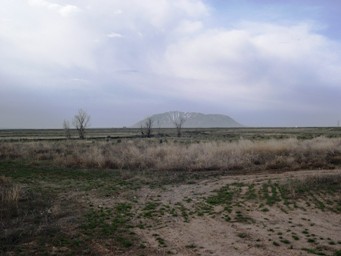The Air Resources Laboratory (ARL) will collaborate with the Fire Sciences Laboratory of the U.S. Forest Service, Washington State University, and the National Institute of Standards and Technology during a field experiment at Big Southern Butte in eastern Idaho. The study will begin around June 7, 2010 and continue into October. The study involves an array of 50 wind sensors deployed on transects across the butte. Wind measurements will be augmented by sonic anemometers, sodars, and a radar profiler provided by ARL’s Field Research Division (FRD). Additional meteorological information will be provided by the mesonet of 34 stations maintained by FRD for the Idaho National Laboratory. FRD will also provide the Forest Service with Weather Research and Forecasting modeling data for the eastern Idaho area for the duration of the experiment.
Background: The field study at Big Southern Butte is located close to the Idaho National Laboratory on the Snake River Plain. Big Southern Butte is an isolated cinder cone that rises steeply 2300 feet above a relatively flat valley floor. Wildfires there can be very destructive and their behavior is often difficult to predict. Some of the factors that make them difficult to predict are fuel moisture content, terrain effects, and the effects of changing weather on relative humidity, temperature, and wind. Models have been developed that attempt to account for all of the factors influencing wildfire behavior. However, their continuing development is plagued by the relative paucity of spatially resolved surface wind flow information in natural settings featuring complex topography.
Significance NOAA’s expertise will be used to collect key data that will be used to test and improve the Forest Service’s diagnostic wind simulation programs, which are used for modeling wildfire behavior. It is expected that FRD will be able to use the data for their fire modeling efforts and to improve the ARL dispersion modeling program.


